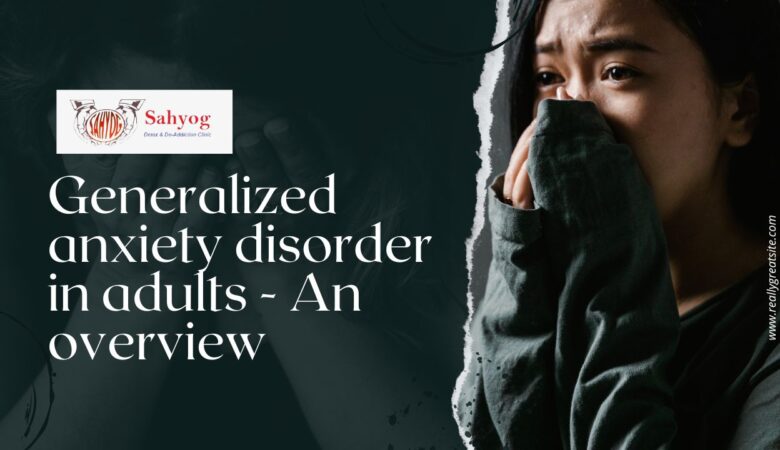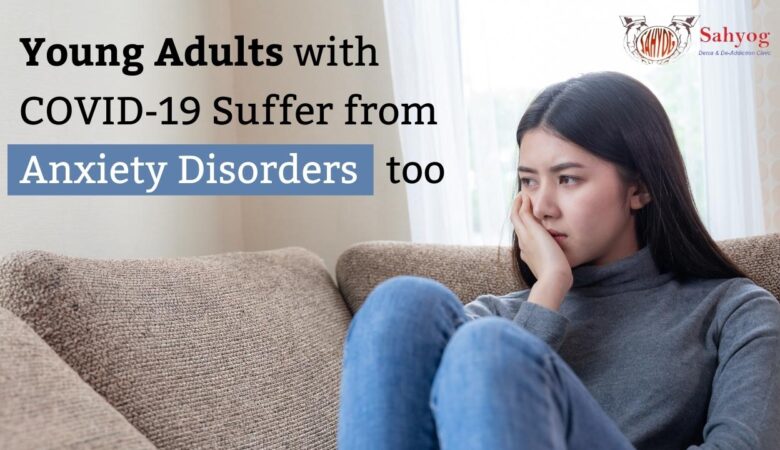Generalized Anxiety Disorder in Adults – An Overview
Introduction Generalized anxiety disorder (GAD) is a mental health condition that affects millions of adults worldwide. Characterized by persistent, excessive, and unrealistic worry about everyday things, GAD can be difficult to diagnose and manage. In this article, we will explore the symptoms, causes, treatments, and strategies for living with generalized anxiety disorder in adults. From common coping mechanisms to therapy methods and medications, learn how to cope with GAD and lead a healthier life. What is Generalized anxiety disorder? Anxiety disorders affect about 40 million adults (from the age of 18 and older, or 18% of the population) in the United States alone, making them one of the most prevalent forms of mental health disorders in the country. An anxiety disorder, Generalized anxiety disorder (GAD) is often accompanied by characteristics such as extreme, uncontrollable and irrational fears regarding everyday tasks and things. These fears are disproportionate compared to the actual source of fear. People diagnosed with GAD are usually overly sensitive and worry about things like health, family, job, finances, etc. They often anticipate disasters and feel anxious all the time. They may feel restless, tense, and on edge most of the time. Often they have trouble sleeping and concentrating and may startle easily. Is Generalized anxiety disorder common in adults? Anxiety disorders are the most common mental health disorder in the United States, affecting 40 million adults in the US age 18 and older, or 18.1% of the population. Generalized anxiety disorder (GAD) is the most common type of anxiety disorder, affecting 6.8 million adults, or 3.1% of the US population. There are twice as much chances of women getting GAD, compared to men. GAD is characterized by chronic, exaggerated worry and tension that is not focused on any one object or situation. Causes of Generalized anxiety disorder in adults There is no one cause of GAD, but it is thought to be a combination of biological and environmental factors. Some people may be more susceptible to developing GAD due to genetic factors. Additionally, stressful life events or trauma can trigger the development of GAD. Biological factors that may contribute to GAD include an imbalance of neurotransmitters in the brain, a family history of anxiety disorders, and chronic medical conditions such as heart disease or thyroid problems. Environmental factors that can play a role in the development of GAD include chronic stress at work or home, financial problems, relationship difficulties, and parenting stress. Symptoms of Generalized anxiety disorder in adults If you have a generalized anxiety disorder (GAD), you may experience a range of symptoms that can interfere with your daily life. Symptoms of GAD can include: Excessive worry and anxiety about multiple events or activities: If you are a victim of generalized anxiety disorder, you will find yourself worrying excessively and being anxious about several events and activities all at once. Difficulty controlling your worry: a person afflicted with generalized anxiety disorder faces great difficulty controlling their worry and panic. Restlessness or feeling keyed up or on edge: People who have generalized anxiety disorder tend to feel ‘keyed up’ or restless all the time. They will constantly feel on the edge and as though they are on the verge of a mental breakdown. Fatigue: One of the biggest and most common symptoms of generalized anxiety disorder is fatigue. If a person is constantly feeling tired and exhausted and showing signs of fatigue, then it may be a sign that they are a victim of generalized anxiety disorder. Difficulty concentrating: A person who is facing generalized anxiety disorder will find it difficult to concentrate on one thing at a time. He may either get tangled up in several different things all at once, or he may zone out doing one thing due to thinking about something else, thus losing focus. Irritability: This is another one of the greatest symptoms of generalized anxiety disorder. A person afflicted with GAD will constantly be on the edge and feel irritated and annoyed. They might get annoyed and panic at every minor inconvenience that may come into their life. Muscle tension: Muscle tension is another symptom of generalized anxiety disorder. People with GAD often feel uncomfortable in the body, feeling tightness and tension in the muscles which can cause pain and discomfort. Sleep problems: People facing this disorder will find it difficult to fall asleep or stay asleep during the night. This can lead to further fatigue and exhaustion throughout the day, making it even more difficult for them to cope with their anxiety. All these symptoms and more besides these can be majorly classified into three broad types: physical symptoms, emotional symptoms, and social symptoms. Physical symptoms are those symptoms that are shown physically in the person and can be noted easily. These include symptoms such as trembling, sweating, racing heart, dizziness, muscle tension, fatigue, and sleep problems. Emotional symptoms are those symptoms that can be felt by a person prone to Generalized Anxiety Disorder. These symptoms include feeling anxious and restless all the time and constantly overthinking everything. These also include constantly worrying, fearing, and getting impatient, irritated, and restless at every minor inconvenience. Lastly, there are social symptoms as well. Social symptoms are those symptoms that can be seen in a person’s behavior when they are out in society. These include symptoms such as not making eye contact with the person they’re speaking to, frequently zoning out during the conversation, blushing, sweating, or physically shaking, and even feeling nervous to the point where they start to feel nauseous when out in a social event or situation. All these symptoms can interfere with their work, school, and personal relationships. Therefore, it is necessary that if anyone is suffering from Generalized Anxiety Disorder, he or she must seek treatment immediately. Treatment options for Generalized anxiety disorder for all ages There are many different treatment options for generalized anxiety disorder (GAD), and the best course of treatment will vary depending on the individual. However, most treatment plans will involve some combination of


